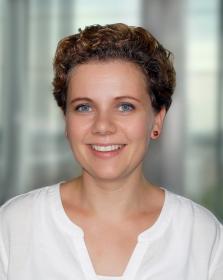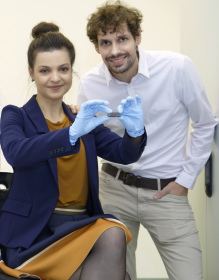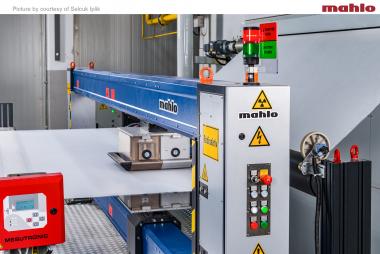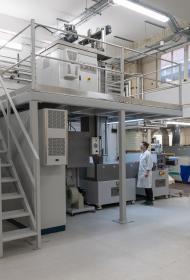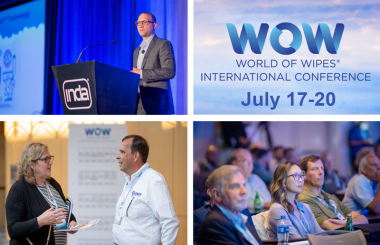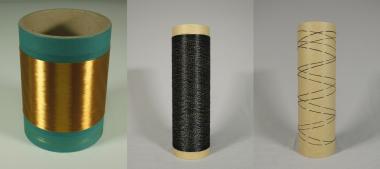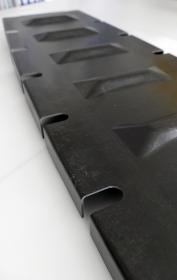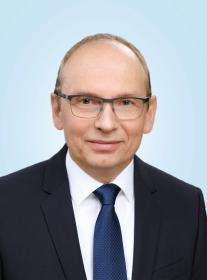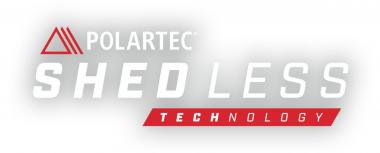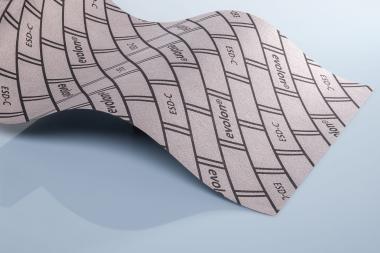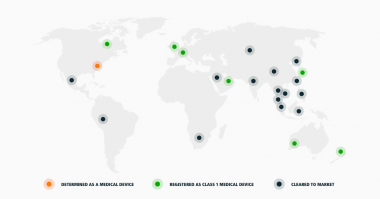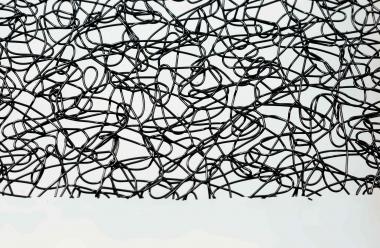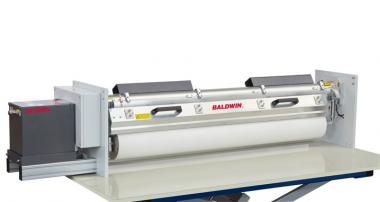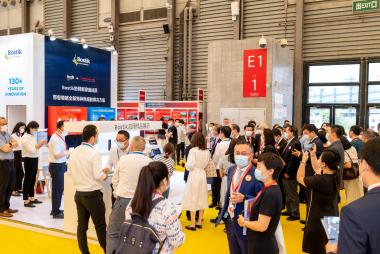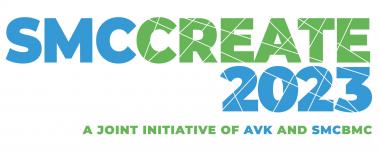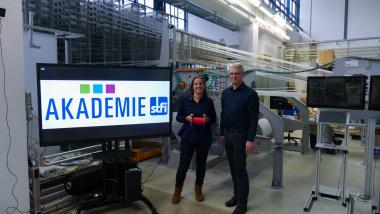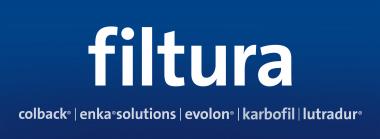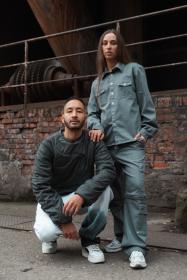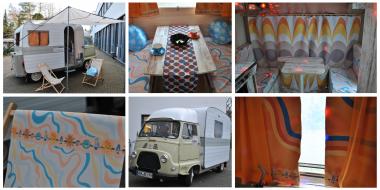Unterschiede zwischen Arbeits- und Schutzkleidung
Ob in Gastronomie und Handel, auf der Baustelle oder in der Produktion, viele Millionen Berufstätige in Deutschland tragen täglich Arbeitskleidung. Dabei sie dient der funktionalen Unterstützung oder optischen Team- Zugehörigkeit, in manchen Branchen schützt sie Mitarbeitende vor Gefahren.
Dominique Frühauf, Produktmanagerin bei CWS Workwear, erklärt die Unterschiede zwischen Arbeitskleidung und Schutzkleidung.
Arbeitgeber setzen für ihre Angestellten auf Berufsbekleidung, da diese Sicherheit und einen gewissen Wiedererkennungswert des Unternehmens bietet. Firmenlogo und Namensschild sollten dabei nicht fehlen. So fördert die Kleidung den Zusammenhalt der Mitarbeitenden und sorgt für ein professionelles, repräsentatives Erscheinungsbild.
Aber gut ausgestattet in den Tag zu starten, bedeutet mehr als nur eine professionelle Optik. Je nachdem in welchem Bereich ein Mitarbeitender tätig ist, kann auch eine Schutzkleidung notwendig sein.
Funktionalität und Sicherheit
Zunächst muss Arbeitskleidung richtig passen und gut aussehen. Funktionalität und Komfort sorgen dabei für das ideale Gesamtpaket. Sollte keine Schutzkleidung benötigt werden, reicht eine Workwear. Je nach Tätigkeitsfeld der Mitarbeitenden gilt es dabei, die Anforderungen an Abnutzung und gegebenenfalls Besonderheiten wie Arbeiten im Knien, Bücken oder im Freien einzubeziehen. Auf dieser Basis sollten die Dicke und Widerstandsfähigkeit des Gewebes, und funktionale Details wie Verstärkungen oder Polster für den Kniebereich ausgewählt werden. Bewegungsfreiheit und Wohlfühlen steht bei den Anforderungen einer Arbeitskleidung ganz oben auf der Liste für Mitarbeitende.
Risiko oder nicht?
Wird eine Persönliche Schutzausrüstung, PSA, benötigt so muss diese Mitarbeitenden vom Arbeitgeber zur Verfügung gestellt werden. Durch eine Risikobewertung des Arbeitsplatzes wird das Risiko beziehungsweise die Wahrscheinlichkeit eines Gesundheitsschadens durch bestimmte Gefahrenstoffe oder Tätigkeiten bestimmt. In Deutschland legen oft die Berufsgenossenschaften für Branchen fest, welche Berufskleidung getragen werden muss. Die Unternehmen müssen für die Sicherheit der Mitarbeitenden während der Arbeitszeit sorgen.
Die Risikogruppen der Schutzkleidung
Es gibt drei verschiedene Risikokategorien von PSA. Je nachdem, ob und wie wahrscheinlich das Risiko einer Verletzung besteht, fällt die Gruppe aus. In Kategorie I fällt Schutzkleidung, die vor einer geringfügigen Gefährdung schützt, wie z.B. Wetterschutz. Kategorie II bedeutet Schutz gegen ein mittleres Risiko. Ein Beispiel dafür ist die Warnschutzkleidung. Bei Kategorie III handelt es sich um komplexe PSA, die vor lebensbedrohlichen Gefahren schützt. Dazu gehört u.a. Hitze- und Flammschutz. Zudem unterliegt jede Schutzkleidung mindestens einer Norm, innerhalb derer es auch noch Abstufungen hinsichtlich der Schutzanforderungen geben kann.
Passform und Komfort
Passt und sitzt eine Arbeitskleidung richtig, fühlen sich Mitarbeiter:innen automatisch wohler. Bei PSA spielt der Tragekomfort zusätzlich eine wichtige Rolle. Denn sind gute Bewegungsmöglichkeiten in der Schutzkleidung gegeben, können Mitarbeitende Gefahren schneller ausweichen. Bei der Zertifizierung der Normen einer PSA wird daher auch die Passform überprüft.
Was könnte also passieren, wenn eine gute Passform nicht gegeben ist? Bei Normen wie Hitze- und Flammschutz müssen beispielsweise Hose und Jacke stets überlappen, selbst dann, wenn die Arme gestreckt werden. So soll sichergestellt werden, dass der Körper auch bei Bewegungen gut geschützt ist. Bei Warnschutz sollte insbesondere die Bein- und Armlänge für den Mitarbeitenden stimmen. Denn ist die Hose zu lang und verschwinden die Reflexstreifen in der Schuhfalte, ist die Sichtbarkeit nicht mehr gegeben und eine erhöhte Gefahr für den Träger besteht.
Design und Verarbeitung
Unternehmen, die Arbeitskleidung und Schutzkleidung für ihr Team einsetzen, wünschen sich übergreifend eine ansprechende Optik und einen einheitlichen Look. Hersteller bieten daher Arbeits- und Schutzkleidung in gleichen Farben und ähnlichen Designs an, damit alle Mitarbeitenden miteinander optisch harmonisieren.
Bei Schutzkleidung gibt es einige Einschränkungen beim Design. Denn es gilt das Dachziegelprinzip: Schweißperlen, Flüssigmetalle – alles muss von oben nach unten an dem Textil abperlen können. Nichts darf in Nähten hängen bleiben. Daher hat Schutzkleidung meist weniger Nähte, auch weil sie häufig aus dickerem Gewebe besteht, das schwieriger zu verarbeiten ist. Auch bei den Taschen gibt es spezielle Vorgaben was Größe und Winkel betrifft. Zudem sind die Hersteller bei den Farbvarianten eingeschränkt, da gewisse Hightech-Gewebe nur eingeschränkt einfärbt werden können.
Pflege und Kontrolle
Schutzkleidung erfordert professionellen Umgang beim Waschen und regelmäßige Kontrollen, insofern möglich, auch der Schutzfunktionen. So muss die richtige Temperatur und Handhabung der Kleidung eingehalten werden, damit die PSA langfristig Sicherheit bietet. In der privaten Haushaltswäsche ist dies nicht umsetzbar. Insbesondere auch, da bei jeglichen Änderungen und Reparaturen stets mit Original- Materialien gearbeitet werden muss. Bei Workwear sind die Vorgaben weniger komplex, doch auch hier sollte auf eine fachgerechte Pflege geachtet werden.
Serviceanbieter CWS Workwear bietet im Bereich Arbeitskleidung und PSA Kleidung aus hochwertigen Materialien, die für Unternehmen gewaschen und professionell instandgehalten werden. So haben Arbeitgeber Gewissheit, dass die Arbeitskleidung ihrer Mitarbeitenden sauber und funktional bereitgestellt wird und bei Schutzkleidung alle Sicherheitsbestimmungen eingehalten werden. Denn der Serviceanbieter übernimmt mit der Textilübernahme auch die Verantwortung.






